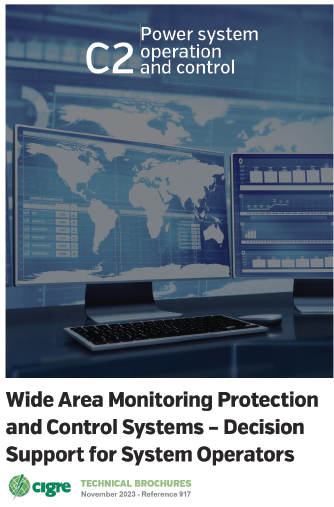(Reviewed by Alex Apostolov, USA)

Wide Area Monitoring (WAM) systems have become essential tools for power system stability assessment in control rooms. These systems use GPS time-synchronized voltage and current measurements from distant substations to enable comprehensive analysis of dynamic system behavior. The voltage phase angle data can also verify steady-state SCADA calculations. Modern IT platforms now allow for efficient Human Machine Interfaces (HMI) and advanced analysis tools. However, better integration is needed between standalone WAM systems and standard control room SCADA/EMS interfaces to improve system observability and control.
Today’s power systems face significant challenges due to the transition from synchronous fossil-based generation to power-electronic-connected renewable sources. Changes in operational responsibilities among different system participants further complicate stability monitoring and control efforts. The goal of CIGRE WG C2.18 has been to address these issues and report to the industry in a comprehensive technical brochure (TB).
TB 917 was published in November 2023 and offers valuable insights into the integration of Wide Area Monitoring (WAM) and Wide Area Monitoring, Protection and Control (WAMPAC) systems into modern power grids. It serves as a natural extension of the previous TB 750, focusing on pragmatic approaches adopted by Transmission System Operators (TSOs) worldwide.
The brochure effectively addresses the current accumulated experience with WAM systems, showcasing real-world applications in monitoring critical power system properties: low-frequency oscillations, voltage magnitude variations, voltage phase angle differences, and frequency deviations. Through numerous case studies from various countries, it demonstrates how these systems provide invaluable tools for stability assessment, control room operations, and post-event analysis.
A significant strength of TB 917 is its practical approach to explaining system architecture and expandability. It offers detailed descriptions of various WAM system configurations, from simple standalone setups to complex redundant architectures integrated with SCADA/EMS systems. The authors provide clear guidance on how to design reliable and scalable WAM networks, considering factors like communication bandwidth, time synchronization, and cybersecurity.
The document makes a compelling case for the standardization of event recording and analysis methods, which remain relatively immature. It discusses ongoing harmonization initiatives and presents manufacturers’ perspectives on standardization potential, illuminating the challenges and opportunities in this area.
One of the most valuable sections details the interfacing of WAM systems with EMS, SCADA, and other database systems. Through case studies from Spain (Red Electrica) and Croatia (HOPS), the brochure provides concrete examples of successful integration approaches, emphasizing data exchange methods and cybersecurity considerations.
The dedicated chapter on SIPS (System Integrity Protection Schemes) and WAMPAC applications is particularly enlightening. It explains how these systems can help address challenges from increasing renewable integration and demonstrates their effectiveness through several international implementations, including examples from Italy, Spain, Iceland, Peru, Panama, and Australia.
TB 917 also covers the use of WAM systems for model validation, providing methods for identifying model issues and validating power plant models, dynamic system models, and transmission line parameters. These practices are essential for accurate system planning and operation.
The document concludes with a forward-looking chapter on research and development areas, highlighting promising directions such as dynamic line rating, inertia estimation, and integration with AI and machine learning technologies.
Overall, TB 917 represents an excellent resource for power system engineers, control room operators, and system planners. It bridges the gap between theoretical understanding and practical implementation, providing valuable guidance for utilities looking to enhance their situational awareness and operational processes through synchronized phasor measurement technology. Its collection of real-world experiences and pragmatic recommendations makes it an essential reference for anyone involved in modern power system operation and control.
TB 917 was published in November 2023 and offers valuable insights into the integration of Wide Area Monitoring (WAM) and Wide Area Monitoring.
A significant strength of TB 917 is its practical approach to explaining system architecture and expandability.
Wide Area Monitoring Protection and Control Systems
CIGRE Technical Brochure 917
WG C2.18
ISBN 978-2-85873-622-5








